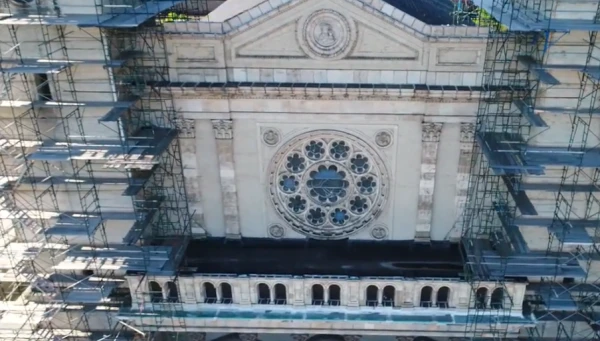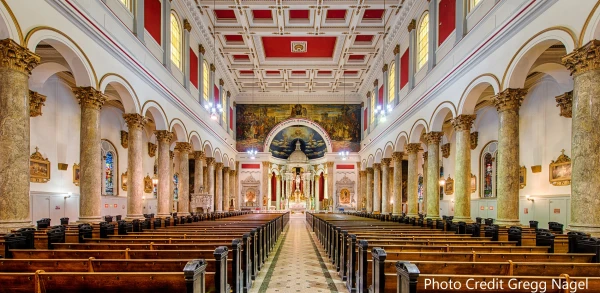CNA Staff, Jun 7, 2024 / 15:45 pm
A more-than-century-old Catholic parish in Chicago is one step closer to gaining protection status from the city government, putting what one advocate calls the “beloved, historic, and exquisite house of worship” on track to historical preservation.
The Society of St. Adalbert, a group dedicated to preserving the St. Adalbert Parish in the city’s Pilsen neighborhood on the Lower West Side, said in a Facebook post on Friday that the Chicago Landmark Commission in its Thursday meeting “voted unanimously to landmark all four buildings on the St. Adalbert site.”
The landmark commission says on its website that it is “responsible for recommending buildings, sites, objects, and districts for legal protection as official Chicago landmarks.” The nine-person board meets monthly.
The parish community dates to 1874 and has served Polish immigrants and their descendants as well as the Mexican-American community more recently. The present soaring Gothic cathedral-style structure — designed by noted Chicago architect Henry Schlacks — was completed in 1914.
The St. Adalbert group said on Friday there are “still two more steps” before the parish can receive official protected status. The city zoning committee must give its approval to the proposal, after which the full 50-alderman city council will vote on the designation.
The full city council vote could be as early as Wednesday, June 12.
‘A battle to save St. Adalbert’s’
Julie Sawicki, one of the board members of the Society of St. Adalbert, told CNA on Friday that the vote was “the first major step to protect our beloved, historic, and exquisite house of worship for future generations of Catholics.”
“It has taken us five years to get to this point and we know that God is holding our hand,” she said.
In 2016 the Archdiocese of Chicago announced that due to “the dangerous state of repair and prohibitive costs of repair and maintenance,” the parish would be “reduced to uses other than divine worship.” Among the necessary repairs was a $3 million structural restoration of the parish’s two towers, the archdiocese said.
In 2019 the archdiocese announced that the building was “relegated to profane but not sordid use,” meaning the parish would “no longer be a sacred space and may not be used for worship.”
Sawicki said members of the parish have been fighting to preserve it for years. The parish society group in 2017 presented a plan to the archdiocese to save the parish, she said, including designating it a shrine as well as converting the property’s 52-room convent to a 40-room retreat house.

The archdiocese in September of that year offered the parish to the preservation group for free, Sawicki said. Yet after three months the deal was called off, she said, with the archdiocese allegedly saying it was planning to “market” the parish.
The Archdiocese of Chicago in a statement to CNA disputed the claim that the parish was ever offered for free.
“That is not true and never was,” the statement said. “The St. Adalbert property was never offered for free. Despite collaborating with the St. Adalbert Preservation Society for several years, they were never able to come up with a realistic plan or viable funding source for the property’s acquisition, upkeep, or redevelopment.”
(Story continues below)
“In the last three years, they have expressed no further interest in purchasing the property,” the archdiocese said in its statement.

Sawicki told CNA that since the disputed deal fell through, advocates have been engaged in “a battle to save St. Adalbert's from demolition as well as any potential, non-Catholic uses.”
“There have been four contracts for sale that have fallen apart” over that time, she said. “No doubt, the hand of God was also at work here.”
Sawicki said it was “disheartening” that Church leadership isn’t putting “thought and effort into figuring out creative solutions for our churches.”
She criticized the archdiocese’s ongoing “Renew My Church” plan, which has closed and merged dozens of parishes in order to address shrinking budgets and priest shortages.
“There are solutions for our unwanted churches,” she said. “Most people do not know what can be done to save a church and are often overwhelmed by the thought of going up against a powerful diocese.”
But “the St. Adalbert situation has emboldened us and we remain steadfast in our mission,” she said.
This story was updated on Saturday, June 8, at 7:30 a.m. with comments from the Archdiocese of Chicago regarding the sale of the parish to the Society of St. Adalbert.






